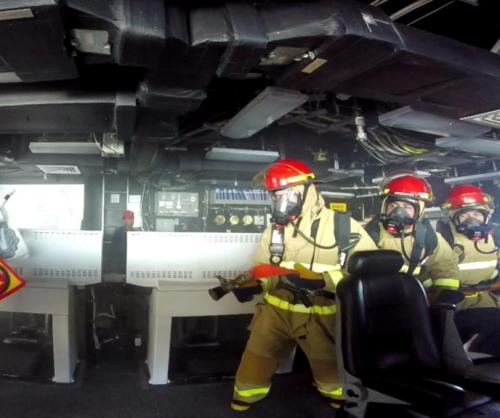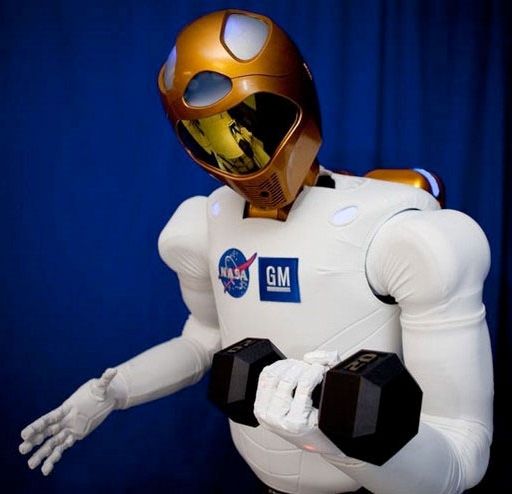Doctors are using virtual reality to treat hospital patients.
Category: virtual reality – Page 99

Mattel’s latest VR View-Master has focus controls and headphones
I remember seeing this two weeks ago about the Mattel’s View-master returns with VR capabilities. However, they keep adding more bells and whistles to it.
What’s unique, however, is the level of interactivity, plus there’s an augmented reality (AR) twist-when you lay out the compatible cards on a table and put the viewer on, related objects appear on top of them to let you know what kind of experience awaits. However, Mattel is now ready to tackle the market with a new product dubbed the View-Master Viewer DLX.
The View-Master Viewer DLX has a headphone connector and a focal adjustment to make the virtual reality experience more realistic and the visuals better. The latter feature is found on the Gear VR and will be useful for those who have less than flawless vision.
The upcoming View-Master Viewer DLX includes enhanced optical lenses with a focus wheel for adjusting sharpness. With numerous major tech giants already involved in VR, and with companies such as Oculus and HTC betting big on the VR market with high-end headsets like the Oculus Rift and HTC Vive, industry experts expect years 2016–2017 to be a deciding period of time for the future of the VR market as a whole.

Where Artificial Intelligence Is Now and What’s Just Around the Corner
I believe that AI holds a lot of promise and many great things; however, we have to correct some very critical issues 1st before compound a huge issue that we have today. And, that is Cyber Security and re-establish trust with our consumers and customers. Without these 2 being fully addressed; you will compound these two challenges with AI plus run the risk of having an IoT that most people will not wish to use due to hackers, bad data, etc. Not to mention lawsuits for Wi-Fi connected robotics that were hacked and injured or worse some innocent person.
I believe need to ensure priorities are in order before we make things worse.
Unexpected convergent consequences…this is what happens when eight different exponential technologies all explode onto the scene at once.
This post (the second of seven) is a look at artificial intelligence. Future posts will look at other tech areas.
An expert might be reasonably good at predicting the growth of a single exponential technology (e.g., the Internet of Things), but try to predict the future when A.I., robotics, VR, synthetic biology and computation are all doubling, morphing and recombining. You have a very exciting (read: unpredictable) future. This year at my Abundance 360 Summit I decided to explore this concept in sessions I called “Convergence Catalyzers.”

MindMaze: A Virtual Reality Device That Interfaces With Your Brain
MindMaze technology explores the potential of brain machine interfacing with virtual reality, and it just got a huge financial boost.
Switzerland-based VR company, MindMaze received a major investment from Hinduja Group, who has valued the company at over $1 billion. This is a ten-fold increase since its previous valuation in 2012 where it was pegged at $10 million.
In a recent report published by the Economic Times, the investment is only “less than a third” of the company and makes MindMaze one of two “unicorns” in the AR and VR industry. MindMaze now joins Magic Leap in this category, which was values at over $4 billion.
The Void: Alien level experience
In a remote part of Utah, a small team of engineers, designers, and enthusiasts are creating fun and innovative experiences that rival anything you’d see at Disney World or Universal Studios.
The Void is a new age playground that seamlessly blends virtual reality experiences with physical environments, using effects like wind and water to make those virtual worlds feel even more convincing — anything from jungles to caves to fantastic environments you couldn’t dream of.
Here’s an example of an experience at The Void where you explore a research facility and shoot your way through spiders, drones, and an alien.
Produced by Corey Protin. Report by Dave Smith.
FACEBOOK: https://www.facebook.com/techinsider
TWITTER: https://twitter.com/techinsider
INSTAGRAM: https://instagram.com/tech_insider/
TUMBLR: http://techinsider.tumblr.com/
This Mixed Reality Educational App Gives You X-Ray Goggles and Takes You Into the Human Body
When I was a kid I remember being a member of Ms. Frizzle’s classroom. We went on adventures under the ocean, into the rainforest, out to the stars, and even to the center of the Earth and it was amazing.
Of course I am talking about my time on the Magic School Bus.
A relic of the nineties, the Magic School Bus starred Lily Tomlin as Ms. Frizzle, an eccentric teacher who owned a magic school bus that she used to take her students on fantastical journeys. The show and subsequent video games were a big part of my, and thousands of other children of the nineties’, formative years as it presented educational topics in an engaging way that made you curious to learn more.

Honeywell developing virtual reality technologies for military
Honeywell chosen to develop military’s VR technology.
A virtual reality display panel that could replace windows in military ground vehicles is being developed by Honeywell Aerospace for DARPA.
How Virtual Reality Is About to Totally Transform the Travel Industry
Experience your potential vacation options from your office or home prior to booking.
VR has obvious value when it comes to entertainment. But its best use may lie in tourism.
Now You Can Hang With Your Friends In VR
This virtual reality app and headset lets you hang out with your friend in cool environments.

NASA uses virtual reality for robot control
This is an excellent use of both VR and Robotics together to evolve and improve technology for NASA & space travel.
NASA and Sony are working on a virtual reality system that will replicate real life challenges when controlling a robonaut.